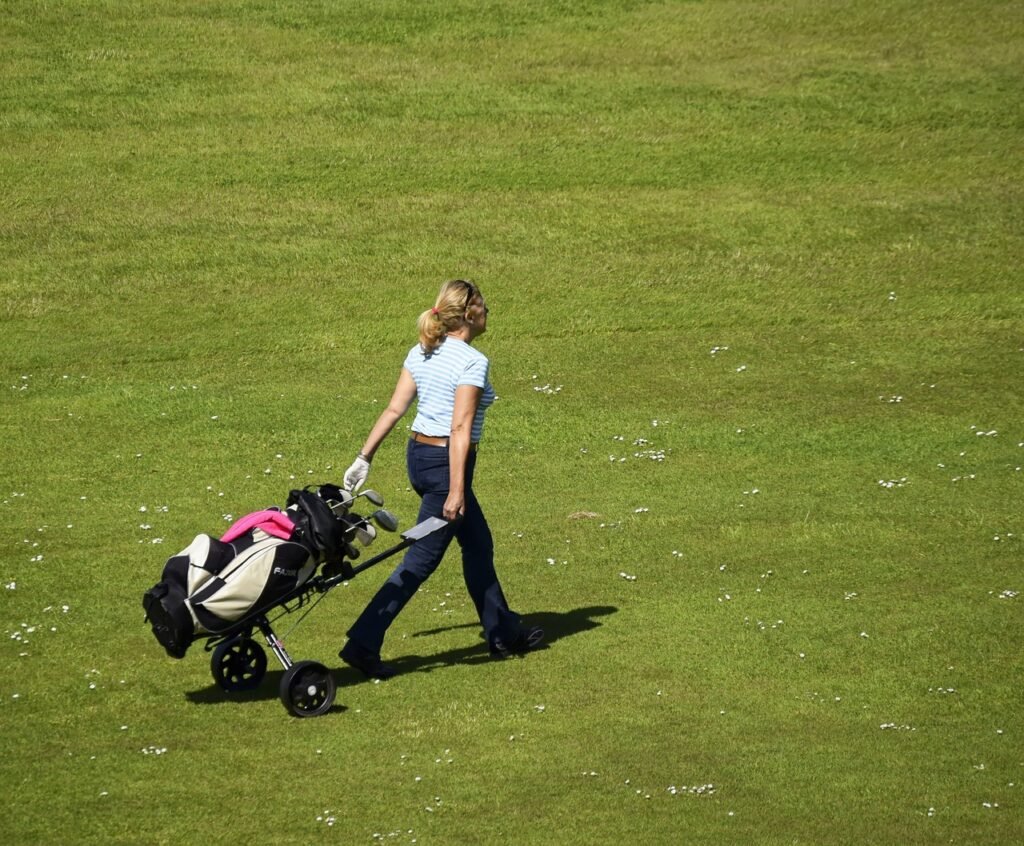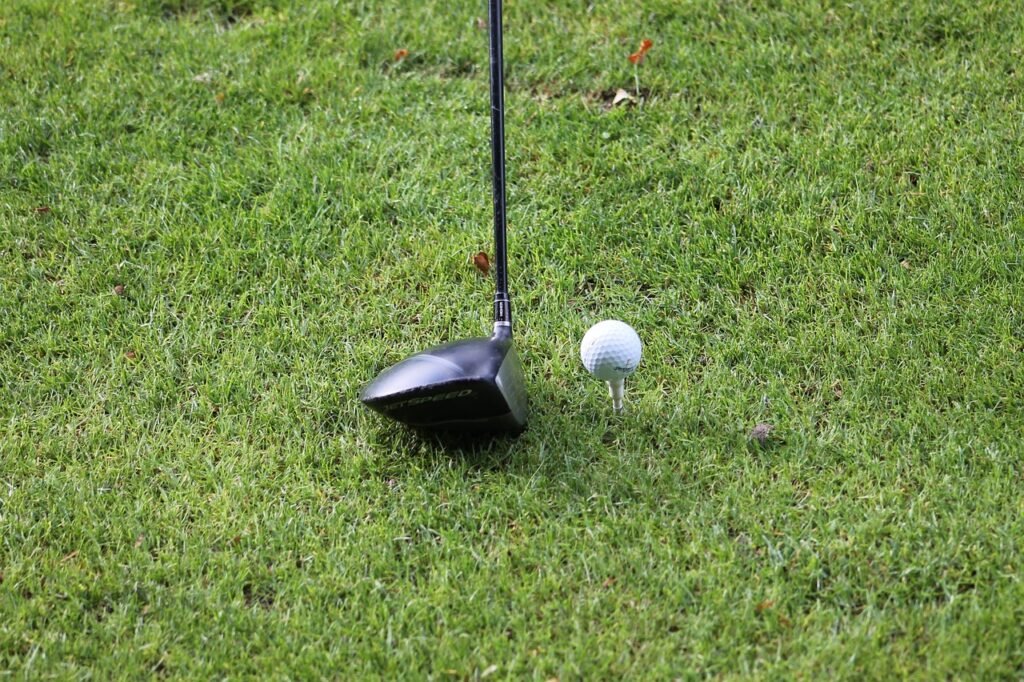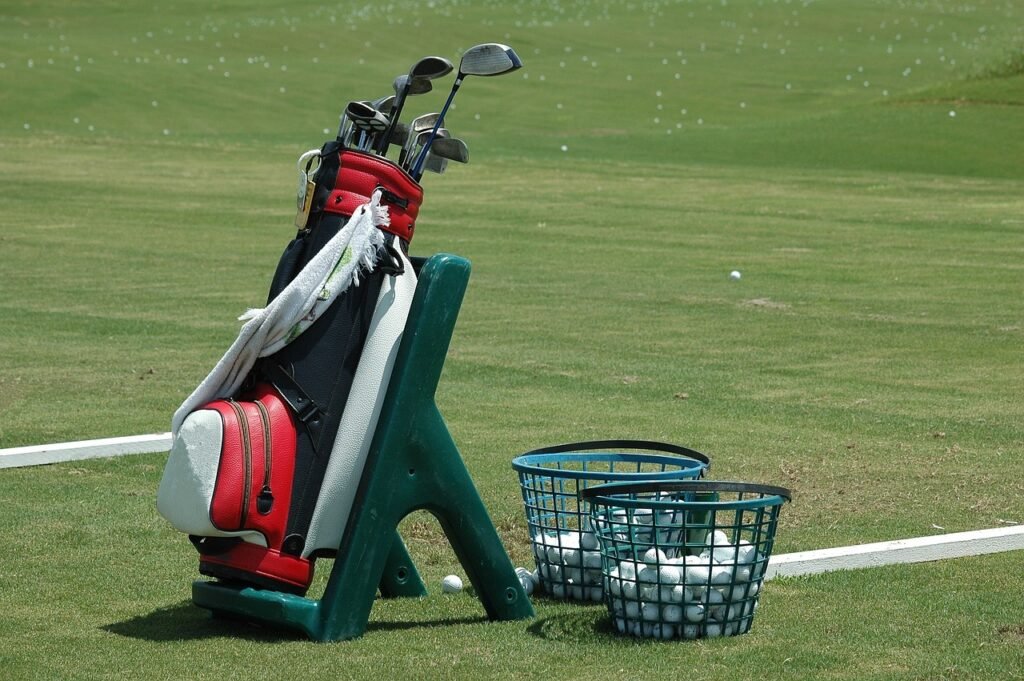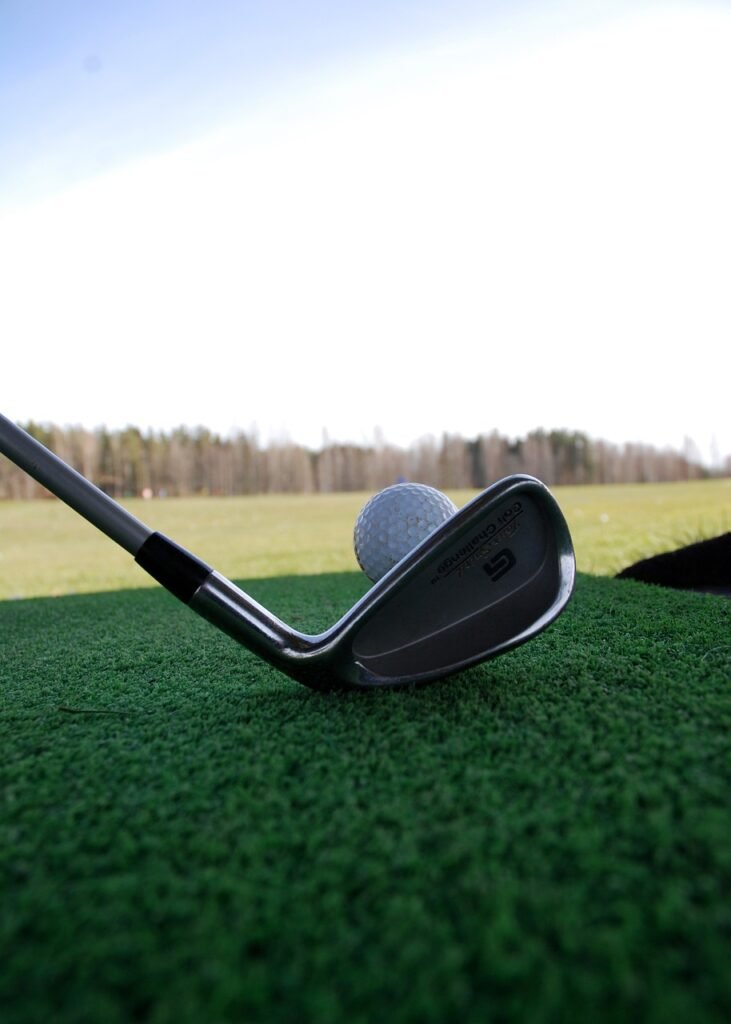Here’s an overview:
- Understanding the Basics: Essential Clubs for Any Beginner and What Clubs to Have in a Golf Bag
- Building the Foundation: Start with the Right Irons
- The Driver: Unleashing Your First Tee Shot with Confidence
- Fairway Woods: Navigating the Long Game for Beginners
- Hybrids vs. Long Irons: Making the Smart Choice
- The Importance of a Trusty Wedge Trio
- Putter Selection: Honing Your Short Game Precision
- Additional Consideratives: Should You Carry a Utility Club?
- Navigating Regulations: How Many Clubs Can You Carry?
- Accessorizing Your Golf Bag: Must-Have Non-Club Items
- Golf Bag Setup: Organizing Clubs for Easy Access
- Starting with the Woods
- Irons in the Middle
- Wedges and Short Irons
- Putter’s Special Spot
- Final Touches
- Custom Fitting: Tailoring Clubs to Your Personal Swing
- Practice Makes Perfect: Essential Tips for Beginners to Improve
- Common Mistakes in Club Selection and How to Avoid Them
- Maintaining Your Clubs: Care Tips for Longevity
- Where to Invest: Balancing Cost and Quality for Beginner Golfers
- Understanding Golf Club Terminology: A Glossary for Newbies
Understanding the Basics: Essential Clubs for Any Beginner and What Clubs to Have in a Golf Bag
When entering the world of golf, understanding the different types of clubs and their uses can be overwhelming. However, there are a few clubs that are fundamental for any beginner to have in their bag.
- The Driver: This is the club you’ll use to start off most holes. It’s designed to hit the ball the farthest, perfect for those long stretches of fairway. Beginners should look for a driver with a large head and a flexible shaft to help with distance and accuracy.
- The Putter: Putting is an art and having a good putter can make a world of difference. It’s used on the green to roll the ball into the hole. A simple, well-balanced putter is best when starting out.
- Irons: These are versatile clubs used for a variety of shots. Beginners should carry a range from around the 5-iron to the 9-iron. These mid to high irons are easier to hit than the lower ones and are used for approach shots, getting out of trouble, and sometimes even off the tee.
- The Wedges: Including a pitching wedge and a sand wedge in your bag will cover most of the short game around the green. They’re designed for high accuracy and control, helping to get out of bunkers and making short shots onto the green.
- Fairway Woods: A beginner might want to add a 3-wood or a 5-wood to their collection. These woods are useful for long shots off the fairway or when the ball needs to be in the air longer.
A beginner’s set doesn’t need to be extensive. Mastering these essential clubs before moving on to more specialized equipment will provide a solid foundation for any golfer’s game. Remember, each club has its own purpose, and learning to use them effectively is key to improving your game.
Building the Foundation: Start with the Right Irons

When a golfer steps onto the course, having a solid set of irons in the bag is like a carpenter arriving with a reliable hammer. Irons are the true workhorses of the game, versatile for a variety of shots, whether you’re teeing off on a par-3 or approaching the green on a par-5.
- Variety is Key: A golfer’s iron set typically ranges from a 3-iron to a pitching wedge. Each iron has its own unique loft, length, and weight which lends itself to specific situations. A golfer should familiarize themselves with the distance they can hit each iron to select the right club for the shot at hand.
- Consider Your Skill Level: Beginners might opt for game-improvement irons which are designed to be more forgiving on off-center hits. They often feature a larger clubhead and a wider sole. As for seasoned players, they may prefer player’s irons which offer more control and the ability to shape shots but require a more precise swing.
- Shafts Matter: The shaft flex and material can greatly influence your iron play. A stiffer shaft is generally suited for players with faster swing speeds, while a more flexible shaft can help those with slower swings. Steel shafts offer consistency and feedback, whereas graphite shafts are lighter and can help increase swing speed.
- Test and Tinker: One cannot overstate the importance of trying out different irons and getting fitted by a professional. A session with a club fitter can help a golfer understand how different irons affect their shots and what configurations will benefit their game the most.
Setting the foundation with the right irons builds confidence with each shot. A suitable set can significantly affect performance, ensuring golfers are well-equipped to tackle any challenge on the course. Remember, the key to mastering the greens often lies in the mastery of the irons.
TheGolf24’s recommended Irons – Click here!
The Driver: Unleashing Your First Tee Shot with Confidence
Stepping onto the tee box with a driver in hand, every golfer knows the thrill of unleashing a powerful first shot. The driver, or the 1-wood, is the largest and most potent club in any golfer’s bag, designed to hit the ball the farthest. To swing with confidence, one must embrace a few key elements.
First, focusing on your grip is crucial. It should be firm yet relaxed to avoid tension that could impact swing speed and control. Remember, the power of your shot comes from the fluidity of the swing, not just the strength behind it.
You also want to ensure that you’re standing correctly. Your stance should be shoulder-width apart, offering a stable base. Balance is vital; too much weight on the heels or the toes can send the ball off-course. As for the ball, it should be aligned with the inside of your front foot to maximize launch angle and distance.
- Keep your eyes on the ball and aim to hit it on the upswing, reducing spin and promoting a straighter, longer flight.
- Mind your backswing. It should be smooth and controlled, focusing on coiling your body to create torque—your power source.
- As you swing through, let your arms extend fully and keep your head down until the follow-through.
Visualization can also be a powerful tool. Imagine the trajectory and destination you want for the ball before you take your swing. Confident drivers often have a mental picture of their shot’s path, which helps in executing the shot with precision.
Remember, consistency is key. Regular practice is the secret behind those confident, awe-inspiring tee shots that start the game on a high note. Keep these tips in mind, trust your club, and watch as your driver sends the ball soaring down the fairway.
TheGolf24’s recommended Driver – Click here!
Fairway Woods: Navigating the Long Game for Beginners

As a newbie to the sport of golf, conquering the long game is a thrilling and crucial aspect of developing your play. Fairway woods play an integral role in this part of the game. These clubs, typically the 3-wood and 5-wood, have longer shafts and larger, rounder heads compared to irons, which means they can send your ball soaring over greater distances.
When selecting a fairway wood, beginners should focus on clubs with more loft. Loft is the angle of the clubface that controls trajectory and affects distance. A higher loft, like that of a 5-wood, can be more forgiving and easier to hit off the ground.
Here are some tips for beginners trying to master the fairway woods:
- Start with the right stance. Your feet should be shoulder-width apart, with the ball positioned just inside your front foot.
- Swing smoothly. Fairway woods require a sweeping motion rather than a steep, iron-like swing.
- Practice makes perfect. Spend time on the driving range getting comfortable with the feel and distance of your fairway woods.
- Don’t swing too hard. Trying to hit the ball with too much force can lead to less control and wayward shots.
Remember, fairway woods are not just for the long fairways. They can come in handy when you’re faced with a long approach shot to the green. With practice, these versatile clubs will become valuable assets in your golf bag, helping you to navigate the long game with confidence and style.
TheGolf24’s recommended Fairway Wood – Click here!
Hybrids vs. Long Irons: Making the Smart Choice
Selecting between hybrids and long irons can be a pivotal decision for a golfer looking to refine their game. Hybrids are designed to offer a blend of the forgiving nature of woods with the precision of irons, making them a suitable choice for golfers who struggle with long irons.
- Ease of Use:
- Hybrids are often easier to hit because of their wider soles and lower center of gravity.
- They offer more forgiveness on off-center hits, a feature that can boost confidence for amateurs and high-handicappers.
- Versatility:
- With their ability to handle various lies, hybrids are the go-to option for shots out of the rough or difficult terrain.
- They can be used for a broad range of distances, making them a versatile club that can replace several long irons.
- Distance:
- Hybrids generally produce longer and higher shots than long irons, thanks to their design.
- They can cover similar distances with less swing speed, advantageous to many players.
On the other side, long irons are the traditional choice for experienced golfers who prefer control and predictability.
- Precision:
- Long irons offer better players more workability and a lower ball flight, which can be essential on windy days.
- They provide a more direct feedback upon impact, which some players might use to refine their swings.
- Trajectory Control:
- For skilled golfers, long irons allow for more control over ball trajectory and shot shaping.
- They can achieve stinging shots that stay under the wind and hold firm on fast greens.
When choosing between hybrids and long irons, golfers should consider their skill level, swing type, and confidence with each club. A prudent approach might involve carrying a mix of both, utilizing hybrids for their ease and long irons for precision when necessary. Ultimately, the smart choice is about enhancing performance and enjoyment on the course.
The Importance of a Trusty Wedge Trio

When navigating the golf course, having a reliable set of wedges at your disposal can mean the difference between a good round and a great one. Wedges are the surgeon’s scalpel of the golf bag; they provide precision and control close to the green, where scoring opportunities are won or lost.
A trusty wedge trio typically consists of a pitching wedge (PW), a sand wedge (SW), and a lob wedge (LW). Each has its unique loft, bounce, and grind to handle a variety of shots and course conditions.
- Pitching Wedge: Usually ranging from 44-48 degrees, the PW is a versatile tool, perfect for full shots into greens and for certain chips and pitches.
- Sand Wedge: Landing between 54-58 degrees, the SW is indispensable for escaping bunkers and hitting high, soft shots from short distances.
- Lob Wedge: With a loft of 58-62 degrees or more, the LW can get the ball airborne quickly to overcome obstacles and stop it swiftly on the green.
Possessing a wedge for different scenarios means a golfer can approach greenside shots with confidence, whether hitting a full pitch from 100 yards, a delicate chip from the fringe, or a high-stakes bunker shot.
By understanding the unique characteristics of these clubs, a golfer can select the right wedge for any situation. The choice may rely on factors like the lie of the ball, the firmness of the green, and the distance to the pin. Knowing how to use the trio effectively requires practice but mastering wedge play can significantly improve scoring.
Remember, it’s not only about having these clubs in the bag; it’s about understanding their capabilities and limitations. Investing time to practice with each wedge will ensure when the moment comes on the course, you’ll have the right touch for that clutch greenside shot.
TheGolf24’s recommended Trusty Wedge Trio – Click here!
Putter Selection: Honing Your Short Game Precision
Selecting the right putter is a crucial step for any golfer looking to improve their short game. A putter that fits your style and stroke can make all the difference on the greens.
- Putter Length: Comfort is key, so make sure the length of the putter allows you to stand naturally. Your eyes should be over the ball, hands under your shoulders, elbows bent but touching your rib cage, and hips over your heels for a stable stance.
- Head Design: Putter heads come in various shapes and sizes. The traditional blade putter is suited for players with an arced putting stroke, while the mallet putter, with its larger head and alignment aids, is ideal for a straight-back-straight-through stroke.
- Weight: A heavier putter head often provides stability and a smoother stroke, especially on slow greens. Conversely, a lighter putter might be better for fast greens to help control the distance.
- Balance: Putters are either toe-balanced or face-balanced. Toe-balanced putters suit those with an arc in their stroke, while face-balanced putters are designed for a straighter putting path.
- Feel: The feel of a putt is a personal preference. Some golfers prefer a softer feel, which is typically provided by a putter with an insert in the face, while others may opt for a putter giving a firmer feedback upon impact.
- Grip Size and Texture: Your putter grip should match your hand size and grip style. Smoother grips can enhance the feel, while larger grips might reduce wrist action and lead to more consistent strokes.
Fine-tuning your putter choice to match your comfort, stroke style, and the green conditions you most frequently encounter ensures you walk up to each putt with confidence. Remember, practicing with your chosen putter is just as important as the selection process itself to master those clutch putts when it matters most.
TheGolf24’s recommended Putter – Click here!
Additional Consideratives: Should You Carry a Utility Club?

When pondering the composition of their golf bag, many players deliberate over whether to include a utility club, commonly known as a hybrid. This club is engineered to offer the ease of use of a fairway wood with the accuracy of an iron, making it a versatile option for various shots. Here are a few factors to consider:
- Course Layout: If you frequent courses with long par-3s or challenging par-4s, a hybrid can be a lifesaver, providing both distance and precision where a long iron might falter.
- Personal Play Style: Golfers with a penchant for hitting high and soft landing shots may find the utility club especially beneficial. Its design can help achieve these shots more easily than with long irons or low lofted woods.
- Weather Conditions: In windy conditions, a hybrid’s lower trajectory can offer an advantage, cutting through the breeze more effectively than higher-lofted clubs.
- Rough Recovery: The utility club’s design allows for easier lifting of the ball from the rough, a common issue where higher-numbered irons or woods might struggle.
- Confidence Factor: Golf is a game of confidence. If holding a hybrid instills more assurance than an iron, it may well be worth the space in the bag. Confidence often translates into better performance on the course.
- Bag Real Estate: Weigh the benefit of the utility club against what must be left out to make room for it. Is the diversity of shots it provides worth the trade-off? Each golfer must decide based on their specific strengths and deficiencies.
Incorporating a utility club could be a game-changer for many players, but it should never be a default choice. It’s all about the strategic benefits it offers to your specific game on the greens.
Navigating Regulations: How Many Clubs Can You Carry?
When you’re hitting the links, knowing your equipment regulations is just as crucial as having the right swing. In golf, there’s a limit to the number of clubs you can carry, and it’s a rule taken pretty seriously. So, how many clubs are you actually allowed to tote around?
Well, according to the official guidelines set by the United States Golf Association (USGA), the magic number is 14. Yep, you heard that right—no more than 14 clubs in your bag during a stipulated round of golf. Getting this right is key, as carrying too many can lead to penalties, which is the last thing anyone wants, especially when you’re trying to impress your buddies or nail that all-important shot.
Let’s break down the must-haves within those 14 clubs:
- The Big Sticks: Your driver and at least one fairway wood, typically the 3-wood.
- The Hybrids: These can be game changers and are a mix between irons and woods.
- The Irons: A standard set ranges from 3-iron to 9-iron.
- The Wedges: Essential for the short game, with at least a pitching wedge and a sand wedge.
- The Putter: The club that’ll get you out of the green and hopefully into the hole.
Now, you’ve got a bit of wiggle room within that 14-club limit. You could drop a lesser-used iron to add another hybrid or wedge, or perhaps you favor a specialty putter for certain situations. Personalizing your club set to your game is part of the strategy, but always, always count ’em up before stepping onto that first tee.
Remember to play within the rules, and those 14 clubs could be your ticket to a great round. Don’t let a technicality mess up your scorecard!
Accessorizing Your Golf Bag: Must-Have Non-Club Items

While the clubs are the superstars in a golfer’s bag, a few non-club essentials can make a round of golf much more pleasant. Here’s a lineup of must-have accessories every golfer should consider:
- Golf Balls and Ball Markers: Keeping a good stock of golf balls is crucial because let’s face it, everyone loses a ball now and then. Accompany these with some distinctive ball markers to keep your spot on the green.
- Tees: These little stakes are as essential as the clubs themselves when it comes to teeing off. Carry a variety of sizes for different club choices and ground conditions.
- Golf Gloves: A high-quality glove can significantly enhance grip, reduce hand fatigue, and prevent blisters. They’re especially helpful in hot or wet conditions when grip can become compromised.
- Divot Repair Tool: Maintaining course etiquette includes repairing any damage to the green caused by golf balls. This simple tool easily fits in any pocket.
- Umbrella and Rain Gear: Don’t let a spot of rain delay your game. An umbrella can protect you and your equipment, while a light rain jacket or poncho can keep you dry while you play.
- Sun Protection: Sunblock, a hat, and sunglasses are key for protection against the sun. The last thing anyone wants is a sunburn affecting their swing.
- Energy Snacks and Hydration: Golf is an endurance sport. Keep some water and energy-rich snacks like nuts or energy bars on hand to stay fueled and focused.
- First Aid Kit: It’s always smart to carry band-aids and antiseptic wipes for minor cuts or blisters. It’s better to be safe than sorry.
With these accessories in your golf bag, you’re not just prepared for the game but also for the elements and the full day ahead. They complement the clubs and enhance the overall golfing experience.
Golf Bag Setup: Organizing Clubs for Easy Access
Organizing one’s golf bag is like setting up a personal toolkit tailored for the green battlefield. A well-arranged bag can save effort, time, and avoid stress during a game. Here’s how to place those essential clubs for easy access when it’s your time to swing:
Starting with the Woods
At the back of the bag, which is the part furthest from the strap, place your driver and any other woods you carry. These are the longest clubs and, consequently, go in first so they don’t tangle with shorter clubs.
Irons in the Middle
The irons follow, organized from longest to shortest – that means starting from the 2-iron down to the wedges. Some prefer to arrange them in descending order for a quick visual grab. Make sure each club sits in its own slot, if the bag allows, to prevent damage from clubs banging together.
Wedges and Short Irons
Wedges and the shortest irons reside toward the front of the bag. Since these are often used for approach shots and around the green, having them easily accessible is crucial for a quick game transition.
Putter’s Special Spot
Many modern golf bags come with a dedicated putter well. If so, tuck your putter here for protection and easy retrieval. If not, the putter can rest with the wedges.
Final Touches
Finally, remember to distribute any headcovers evenly at the top of the bag to keep your woods safe and to avoid overcrowding. Keep any alignment sticks on the side, attached externally if possible. This well-ordered setup ensures a smooth flow from one shot to the next, allowing you to focus purely on your game.
Custom Fitting: Tailoring Clubs to Your Personal Swing

When it’s about honing your game, the importance of custom-fitted golf clubs can’t be overstated. Custom fitting matches clubs to your unique swing characteristics, ensuring that every hit feels like a brush with perfection.
Imagine having a set where each club feels like an extension of your arm—that’s what custom fitting offers. The process involves a few key parameters:
- Length: The right club length is foundational to maintaining posture and ensuring the clubhead makes proper contact with the ball.
- Lie Angle: The angle between the club shaft and the ground plays a huge role in the direction your ball will travel. If the lie angle is off, your shots might consistently veer off to one side.
- Grip Size: A grip that’s too large or too small can affect your swing mechanics. The correct grip size helps with better control and feel.
- Shaft Flex: The flex should match your swing speed. A shaft that’s too stiff or too flexible can disrupt the timing and flow of your swing.
- Club Head Design: The design can influence ball flight, spin, and forgiveness on mis-hits. You’ve got options like cavity backs for forgiveness or blades for better control.
Here’s a sweet spot not many consider—your swing might change over time, so it’s smart to reassess your fitting regularly. Whether it’s due to improved technique, physical changes, or wear and tear on your clubs, a periodic fitting session will keep your game up to par.
Remember, it’s not about having the most expensive or high-tech clubs. It’s about having clubs that are calibrated to your swing. So before you splurge on a fresh set, consider a custom fitting session. It could be the game-changer you’ve been looking for.
Practice Makes Perfect: Essential Tips for Beginners to Improve
Embarking on the journey of golf can feel overwhelming, but with the right attitude and consistent practice, any beginner can improve their game. Here are some essential tips to guide novices as they strive to master the greens:
- Start with the basics: Before worrying about having every possible club, focus on learning to use a few essential ones. A driver, a putter, an iron, and perhaps a hybrid are more than enough to get started.
- Develop a solid stance and grip: Your stance and grip are the foundation of your swing. Spend time ensuring that your grip is neither too tight nor too loose and that your stance is balanced and comfortable.
- Understand swing mechanics: Breaking down the swing into stages can help beginners avoid feeling overwhelmed. Concentrate on your posture, the takeaway, the backswing, downswing, and follow-through.
- Practice your putting: Putting might not seem as thrilling as driving the ball long distances, but it’s an essential part of the game that can shave strokes off your score. Spend ample time on the practice green.
- Learn from others: Whether it’s a friend who’s more experienced, a local pro, or watching tutorials online, seeing how others handle the clubs and approach the game can provide valuable insights.
- Stay patient and realistic: Progress in golf is often slow and non-linear. Set realistic goals and celebrate small improvements.
Remember, it’s called ‘playing’ golf for a reason; make sure to have fun even as you’re working to get better. Soon enough, with dedication and practice, those strokes will start melting away, and the true enjoyment of the game will take hold.
Common Mistakes in Club Selection and How to Avoid Them

Choosing the right club for a particular shot is one of the most crucial decisions a golfer makes on the course, yet it’s common for golfers to fall into several traps. Here’s how to sidestep these typical errors:
- Overlooking Course Conditions: Players often ignore the impact of wind, moisture, and course layout on their shots. Golfers should factor in these elements when selecting their clubs. For example, a wet course may require more loft to avoid ground interference, while wind conditions might necessitate a stronger club.
- Playing the Ego Game: Many golfers choose the club they assume should be used for a certain distance rather than the club that will actually get them there. It’s essential to be realistic about one’s capabilities and choose the club that fits one’s actual average distance, not the hoped-for distance.
- Neglecting the Lie: The ball’s lie can greatly influence club selection. A ball sitting down in the rough might need a club with more loft to get it airborne, while a ball on a downhill lie might require a less lofted club.
- Ignoring the Importance of Approach: Golfers sometimes grab the longest club they can hit with the idea of getting as close to the green as possible. However, it’s often smarter to choose a club that leads to a comfortable next shot. Think positioning over brute distance.
- Following the Pack: Nothing screams ‘amateur’ like using the same club as your playing partner just because they hit a good shot with it. Each golfer’s swing is unique; choose the club that works for you, not your buddy.
Avoiding these mistakes doesn’t just require knowledge but also honest self-assessment and strategy. Take the time to consider these elements, and club selection blunders will become a rarity rather than the norm.
Maintaining Your Clubs: Care Tips for Longevity
Caring for your golf clubs is not just about keeping them shiny; it’s about preserving their performance and extending their lifespan. Here are tips to ensure your clubs remain in top condition:
- Clean Regularly: After every round, take a moment to wipe down your clubs. A simple damp cloth can remove dirt and grime from the heads, and a soft-bristled brush can dislodge any embedded dirt. Don’t forget the grips – using a mild soap and water solution will keep them tacky for a better hold.
- Inspect Clubs Often: Regular checks can spot early signs of wear or damage. Look for nicks in the club faces, cracks in the grips, and ensure the shafts aren’t bent or damaged.
- Store Correctly: Avoid leaving clubs in the trunk of your car, as extreme temperatures can damage them. Store your clubs in a cool, dry place. Use headcovers to prevent dings and scratches, especially on your woods and putter.
- Handle With Care: Always handle your clubs with respect. Never throw or slam your clubs, as this can lead to unnecessary damage.
- Professional Check-Up: Once a year, consider having a professional give your clubs a tune-up. This can include re-gripping, checking the loft and lie angles, and ensuring the shafts are still suited to your swing.
- Avoid Rough Surfaces: Be mindful of the surfaces you rest your clubs on; harsh concrete or gravel can scratch and wear down the clubhead. Soft grass or a golf towel is a safer bet.
By following these simple care tips, your golf clubs can remain faithful companions on the greens for years to come. Remember, well-maintained equipment can make all the difference between a good round and a great one.
Where to Invest: Balancing Cost and Quality for Beginner Golfers

For beginner golfers, finding the right balance between cost and quality when investing in clubs can be challenging. While high-end clubs can be tempting, they may not be necessary or the best use of resources when you’re just starting. Instead, focus on getting the most value for your money.
- Begin with the Basics: Opt for a starter set that offers essential clubs—like a driver, a couple of irons, and a putter. These are crucial for learning and can often be found as part of a package deal that provides excellent value.
- Prioritize Playability: Look for clubs with game-improvement features, which are designed to be more forgiving on mis-hits. This usually includes clubs with larger sweet spots and perimeter weighting.
- Don’t Overlook Used Clubs: Gently used clubs can be a fantastic way to get high-quality equipment at a fraction of the cost. Check out second-hand sports stores or online marketplaces for deals.
- Quality Over Quantity: Instead of buying a full set, consider purchasing fewer clubs of better quality. This not only saves money but also allows you to get used to those few clubs well.
- Seek Expert Advice: Before making a purchase, get a quick consultation at a local golf shop or from a coach. They can offer insights on what beginner golfers like yourself should look for.
- Think Long-Term: Invest in clubs that will be useful as you improve. Avoid those that you’ll quickly outgrow skill-wise or that may deteriorate rapidly.
- Set a Budget: Determine what you’re willing to spend before you start shopping and stick to it. It’s easy to get carried away, but remember, skill development trumps high-end gear for beginners.
Remember, as a beginner, your primary goal is to improve your game, not to have the fanciest clubs. Make smart, cost-effective investments that will help you enjoy and learn the game without breaking the bank.
Understanding Golf Club Terminology: A Glossary for Newbies
When starting in the world of golf, it’s crucial to become familiar with the jargon. Here’s a basic glossary that will help beginners get to grips with the essentials:
- Driver: The club designed to hit the ball the farthest, typically used off the tee on long holes.
- Iron: A group of clubs with flat, angled faces and shorter shafts, used for a variety of shots from the fairway to the green.
- Putter: The club with a flat face used for rolling the ball on the green into the hole.
- Wedge: A type of iron with a higher degree of loft, used for short-range shots to get the ball high into the air, often to get over hazards or onto the green.
- Fairway Wood: These clubs, falling between a driver and irons in length and loft, are used for long-distance shots from the fairway.
- Hybrid: A cross between an iron and a fairway wood, easier to hit than a long iron and handy for a variety of situations.
- Loft: The angle of the clubface that controls trajectory and affects distance.
- Shaft: The long, typically graphite or steel part of the club that connects the grip to the head.
- Grip: The part of the club you hold, which can come in various sizes and materials.
- Lie Angle: The angle between the shaft and the ground when the club is in a proper position at address. Incorrect lie angles can lead to wayward shots.
- Backspin: The spin on the ball induced by the clubface’s loft and swing path, affecting how the ball behaves after it lands.
- Forgiveness: Refers to a club’s design that minimizes the effects of bad swings or off-center hits.
Getting familiar with these terms will not only make it easier for newbies to understand what seasoned golfers are talking about but also help them make informed decisions when selecting clubs for their bag.
Wondering which clubs to carry in your golf bag? Our recommended guide provides an overview of the different types of golf clubs and their uses, helping you decide which ones are essential for your game. From drivers and irons to wedges and putters, understanding the function and purpose of each club type is crucial for optimizing your performance on the course. For a detailed breakdown of each club type and suggestions on what to include in your bag, check out What Are the Different Kinds of Golf Clubs.
